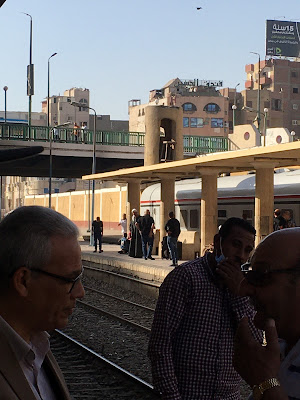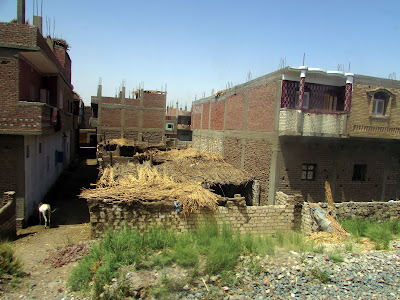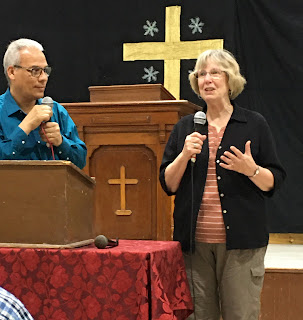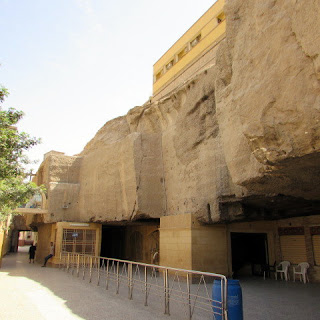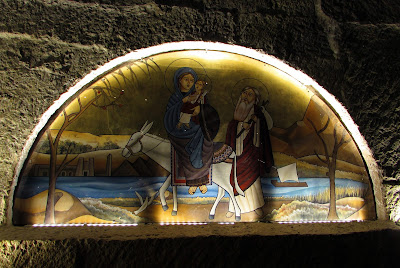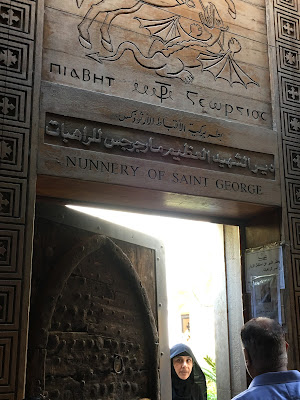For our last day of visiting tourist sites we drove out to the Valley of the Kings. Fun fact: all of the ancient burial sites are on the west side of the Nile, to accommodate someone [understood to be the Pharoah or his queen or someone from his court] in his journey to the afterlife. The east side of the Nile was for the living. We know a great deal about ancient Egypt from burial sites because those can be and have been excavated, but we know far less about ordinary Egyptian life because the living used, demolished, and rebuilt in the land of the living.
That's a fairly rough version, I know, but it is a useful starting point.
Nagy had told us to meet in the hotel restaurant for breakfast at 8, which we did, being compliant folks by nature. The most notable thing about this breakfast was hibiscus juice, which is a deep red color and not sweet. We ate, drank our coffee, compared notes with the others on our team while we waited for Nagy to show up, which he did about 8:45. Tourists were already baking in the sun around the outdoor pool just beyond the glass wall. Temperatures during our days in Cairo were in the low 90s. Here they were in the low 100s.

The Valley of the Kings is about as dry and desolate as Giza, where the Great Pyramids stand, only here one is among mountains consisting entirely of rock and sand. The tombs are located on both sides of a fairly large ravine (the Valley), and there are many of them. Some have not yet been excavated.
Our tickets allowed us to visit three tombs of our choosing. Jacob suggested which of the tombs we might like the most, so we followed his advice. As is often the case in sites like this, unschooled visitors can only take in just so much, so three tombs was certainly sufficient for a first visit.
Any blank areas on the face of walls and ceilings indicate something has crumbled or deteriorated beyond repair in the thousands of years since their creation. Or something had been damaged by tomb robbers. The total absence of ground water due to the total absence of rain, of course, is the biggest factor in preserving these tombs. The restoration process has simply filled in the missing areas with some kind of plaster rather than rebuilding what is missing.

While I tend to be quite squeemish about closed-in spaces, particularly underground spaces, I was fine with these tunnels. Part of it was the size of the hallways themselves. Part, too, was that the tomb tunnels are reasonably cool. Oddly, the only place during our entire visit that I had to stop for a moment to catch my breath was coming up out of one of these tombs in which the ramp was particularly long and steep.











